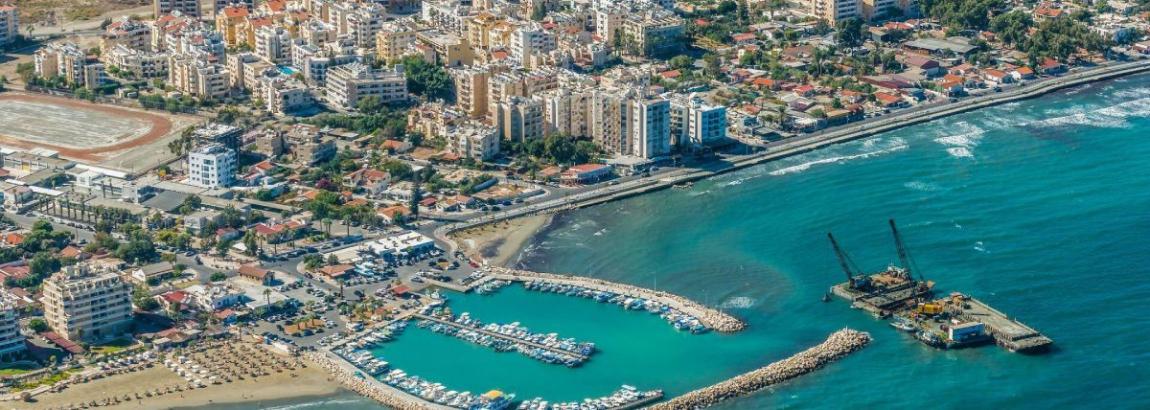
| City - Airport | Arrival: | ||
| Iasi | Chisinau | ||
| from Bucharest (BUH) | BUH → IAS | BUH → RMO | |
| - Henri Coanda (OTP) | OTP → IAS | OTP → RMO | |
In this city, the outstanding philosopher Zeno was born, who founded the school of the Stoics. In 1570 the city was captured by the Turks. Probably because of the large number of ancient sarcophagi found here (in Greek "larnaces"), the city was named Larnaca.
Orthodox church of the 9th century in the city of Larnaca. It is administered by the Metropolis of Kitia, the Cypriot Orthodox Church. The church is named after the righteous Lazarus of Bethany, who, according to the Gospel, was resurrected by Jesus Christ. After the resurrection, he lived for another thirty years, and then died a second time in Cyprus in 63. Above his tomb, the church of St. Lazarus was built. After the Crusades, part of his relics was transferred to Marseille from Constantinople.
a salt lake near the southern outskirts of the city of the same name in the Republic of Cyprus, one of the most important wintering places for birds in Cyprus and Europe. Flocks of flamingos, wild ducks and other waterfowl stop here. The lake is considered one of the most important wetlands in Cyprus and has been declared a Ramsar Site, Natura 2000 site, a Specially Protected Area. The lake is surrounded by halophytic shrubs, and on its shore is the Hala Sultan Tekke Mosque, one of the shrines of Islam. Here is the tomb of Umm Haram, the nurse of Muhammad.
The beach is located in the very center of Larnaca along the long promenade and roadway. A great place for lovers of morning jogging along the sea. There are many restaurants and cafes on the embankment. The entrance to the sea is very pleasant, shallow, without stones.
a medieval Ottoman fortress founded by Europeans in the 14th century and rebuilt by the Turks in 1625 to guard the harbor of Larnaca. The castle is located at the southern end of the Finikoudes Promenade. Currently, the castle houses a historical museum. Symphony concerts and theater festivals are regularly held in the castle courtyard.
Neolithic settlement in Cyprus, which existed in the VII-IV millennia BC. e. Opened in the 1930s. Porfirios Dikayos. Since 1998 it has been a UNESCO World Heritage Site. The archaeological culture to which the city belongs was also spread in other parts of the island and in the Levant; corresponds to the pre-pottery Neolithic period. The population was engaged in agriculture and lived in round mud brick houses.
The architectural complex Hala Sultan Tekke includes a mosque, a mausoleum, a minaret and residential buildings (for women and men) for servants and pilgrims-dervishes. In 1978, near Hala Sultan Tekke, a treasure with 23 pure gold items was discovered. Currently, the mosque is used for Friday prayers and major Muslim holidays.
city-state of the Bronze and Iron Ages in the southern part of Cyprus. The ancient city of Kition is located on the territory of present-day Larnaca, in its northern part. The ancient city, discovered by English scientists while draining local marshes back in 1879, dates back to the Late Bronze Age and stretches about 1200 meters to the south.
Monastery of the Kitian Metropolitanate of the Cypriot Orthodox Church. Founded in 327 by Empress Elena. The monastery has the shape of a quadrangle, one side facing the sea. The main relic of the monastery is an ancient cypress cross in a silver setting, containing a particle of the Life-giving Cross. It is installed in a special niche in the southern part of the first tier of the iconostasis of the cathedral church in honor of the Exaltation of the Honorable Life-Giving Cross. Only men in appropriate clothing are allowed to enter.
located on Mehmet Ali street in the craftsmen's quarter behind the Larnaca fort. Here you can get acquainted with the process of making clay products, take a pottery workshop and purchase traditional Cypriot ceramics.
the first building and some of the surviving mosaics date back to the 6th-7th centuries. The church itself was completed in the 11th century. In the 13th century, a chapel was added; now it houses icons dating back to the 13th-16th centuries. The church itself is also called "built by angels". According to legend, the angels built the church in one night. One of the oldest state-protected trees on the island grows in the park next to the church.
Airports:
Airports: